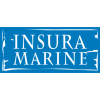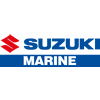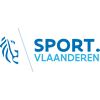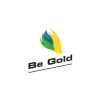Alhoewel trapeze staan (of hangen?) veelvuldig gebruikt wordt in het zeilen, zijn er weinig wetenschappelijke artikels voorhanden.
Beginnen met de abstract (van een nog te schrijven artikel) van Lucas, geneesheer, orthopedist in spe, trainer B catamaranzeilen:
Intruction:
Dr. Lucas Beckers.
Although trapeze sailing is common used on mono- and multihull, there's not much information on the injuries, which are the result of the use of trapeze during sailing in recreational and competitive sailing. Acute injuries due to trapeze are frequently the result of falling out of the trapeze and hard contact with the boat or other sailing gear. Chronic injuries are more often, especially with the crew in high demanding catamaran sailing. There are few studies on this topic, which only described the cardiovascular and muscular stress associated with trapeze sailing in a laboratory environment. They concluded that there's a constant use of external oblique and erector spinae musculature. Injuries may be the result of rapid extension and rotation of the trunk along with eccentric muscle contraction. With this study we want to describe the injuries, which are the result of trapeze sailing in different levels of sailing from novice to Olympic sailors. Lucas
Een artikel over de druk op de lage rug:
ANALYSIS OF DYNAMIC TRAPEZE SAILING TECHNIQUES (1999).
T. Besier, R. Sanders
Abstract:
The purpose of this study was to simulate dynamic trapeze sailing to determine the stress placed on the musculoskeletal system. Muscle activations from the erector spinae and external oblique musculature were measured using electromyography and combined with joint kinematics to analyse several dynamic trapeze sailing postures. Dynamic trapeze sailing involved stresses to the musculoskeletal system that previous studies failed to indicate. These stresses included constant use of external oblique and erector spinae musculature to stabilize the trunk, rapid extension rotation of the trunk coupled with eccentric muscle contraction during dynamic body pumping techniques, and increases in muscle activations owing to asymmetrical body positions. These results have implications for trapeze harness design and injury prevention.
ISBS Conference Proceedings Archive, 17 International Symposium on Biomechanics in Sports (1999)
Geraadpleegd 7 juni 2012.
http://w4.ub.uni-konstanz.de/cpa/article/view/4102
Een biomechanische aanpak en de efficiëntie van verschillende houdingen:
PRELIMINARY ASSESSMENT OF THE EFFECT OF TRAPEZE POSTURES ON RIGHTING FORCE IN SAILING (2006).
Norio Tsujimoto, Yoshinori Takeuchi and Hiroh Yamamoto Biomechanics Lab., Fac. of Educ., Kanazawa Univ., Japan
This study examined the effect of change of ""Trapeze"" postures in sailing on the horizontal force for righting the boat. Three healthy university sailors participated. The subjects were instructed to successively change their trapeze posture. The traction force of the wire was measured from which its horizontal component for righting the boat (FH) was computed. A distinct change of FH was observed when the subjects extend their legs during trapezing. From this result, it can be suggested that the change of the trapeze posture by extending the leg linked to expand the angle between the wire and mast, thereby contributing to the increase the resultant FH.
Geraadpleegd 19 september 2012.
http://w4.ub.uni-konstanz.de/cpa/article/view/242/201
Een studie over de invloed van langdurig trapeze staan op C5, T6 en L5
Comparative Assessment of Novel Sailing Trapeze Harness Designs
Susan J. Hall, Jane A. Kent, Vern R. Dickinson
Prolonged trapezing during sailing often results in low back pain among elite sailors. Modifications of the trapeze harness have been proposed as one approach to ameliorating this problem. To evaluate six harnesses incorporating novel features that had tested well during pilot work, myoelectric activity was monitored at C5, T6, and L5 levels of sacrospinalis and at an abdominal site while five elite sailors wore the harnesses. Integrated EMG (IEMG) values were stored by a microcomputer at periodic intervals during each 10-min trial, as each subject maintained a static horizontal trapezing position in the laboratory. Factorial repeated-measures ANOVA indicated no change in IEMG values over time, but significant (p<0.001) differences among harnesses at all four electrode sites. Features of trapeze harness design that appear to minimize muscular tension include heavy, rigid padding throughout the harness, full-length shoulder-to-buttocks support of the trunk, and adjustable leg strap supports as opposed to a crotch strap.
Geraadpleegd op 19 september 2012
http://journals.humankinetics.com/jab-back-issues/JABVolume5Issue3August...










